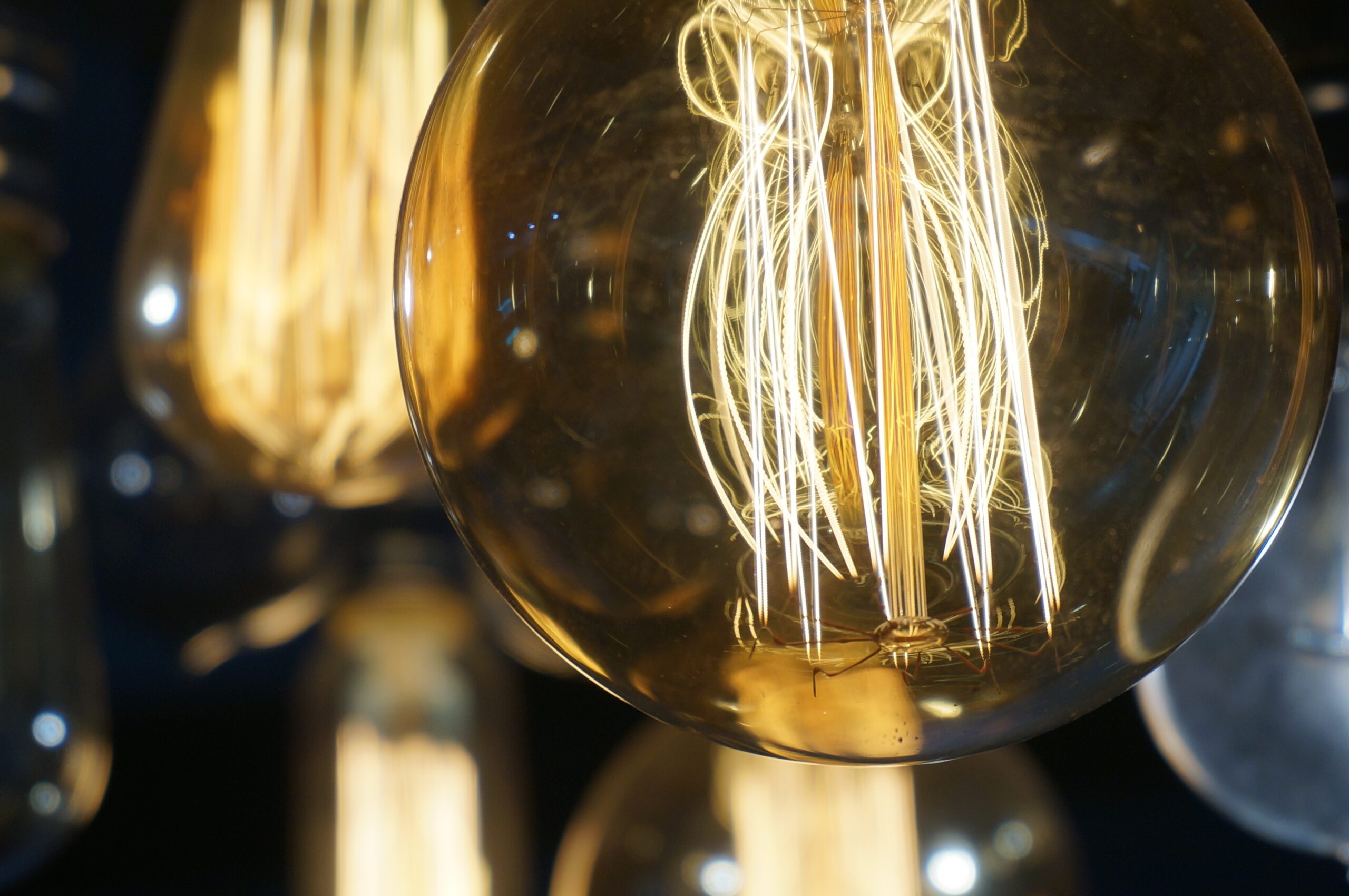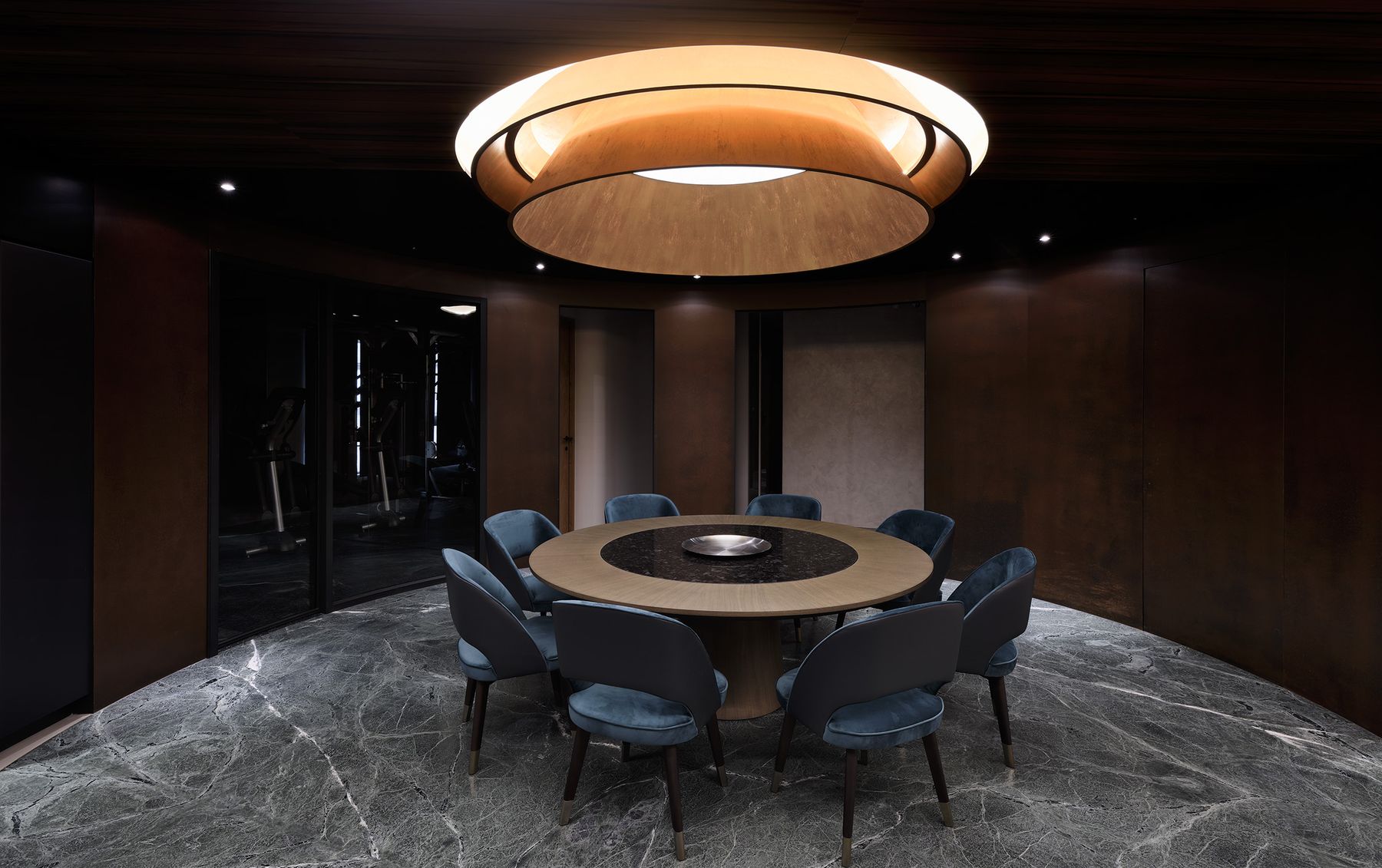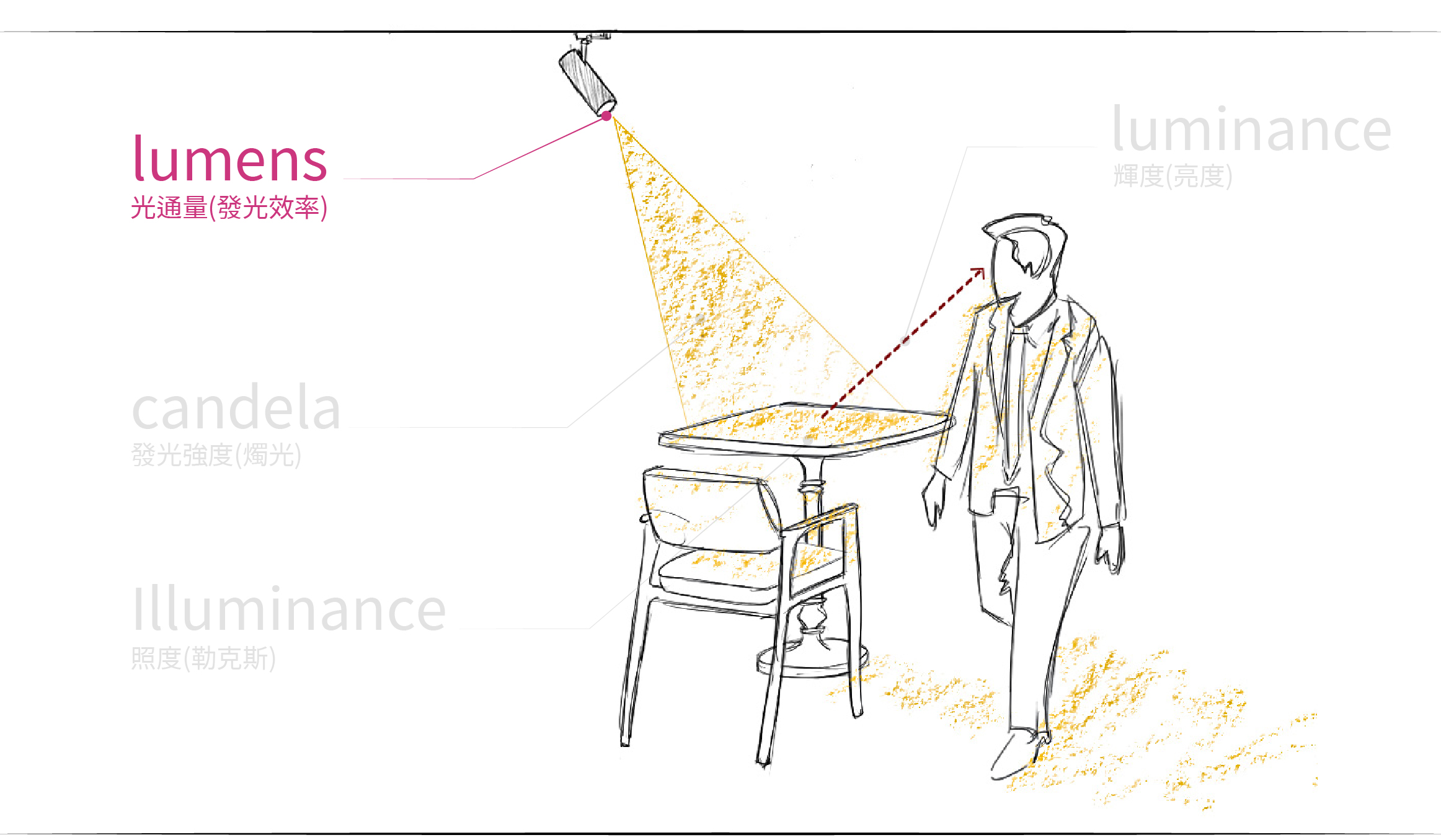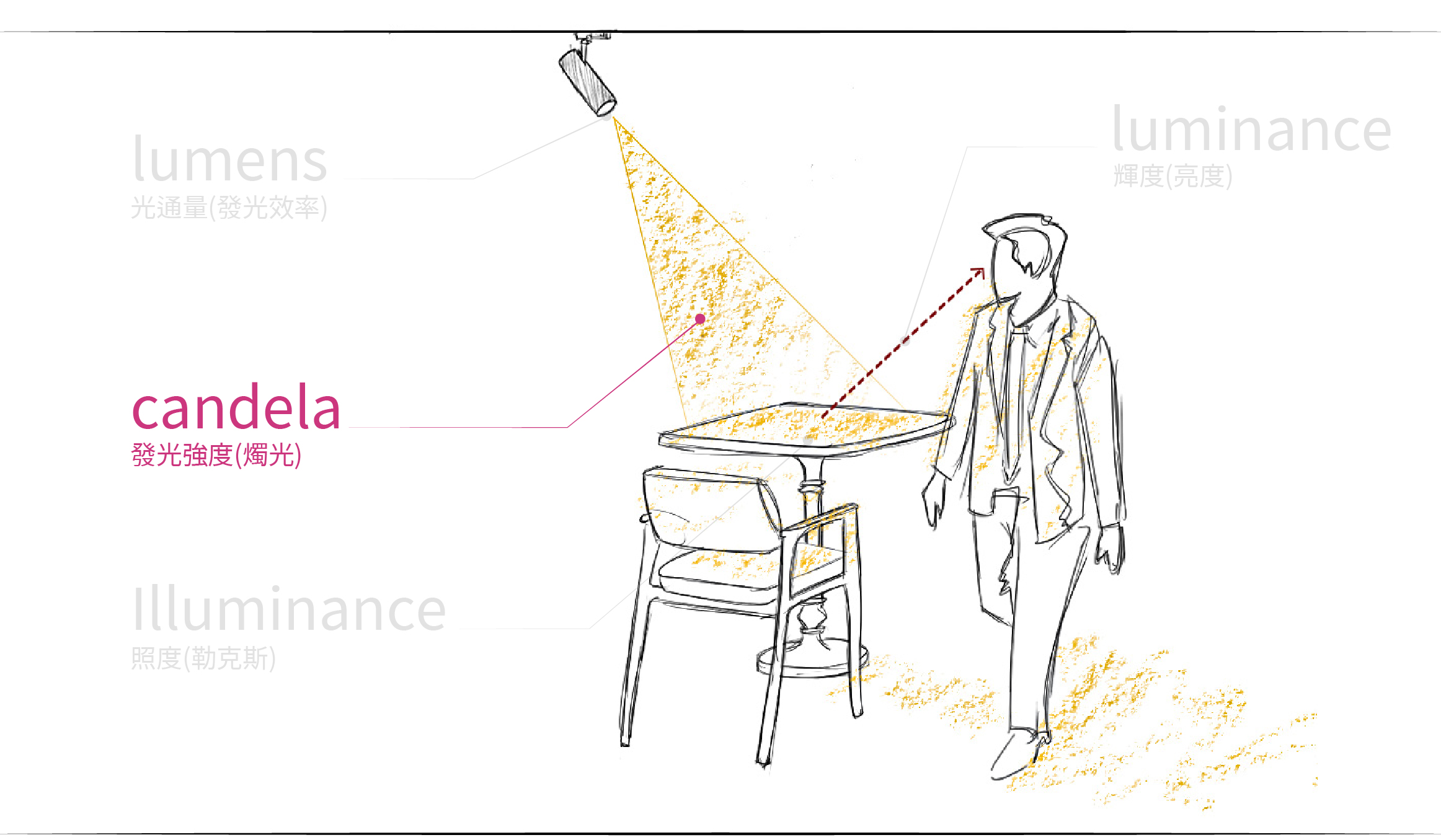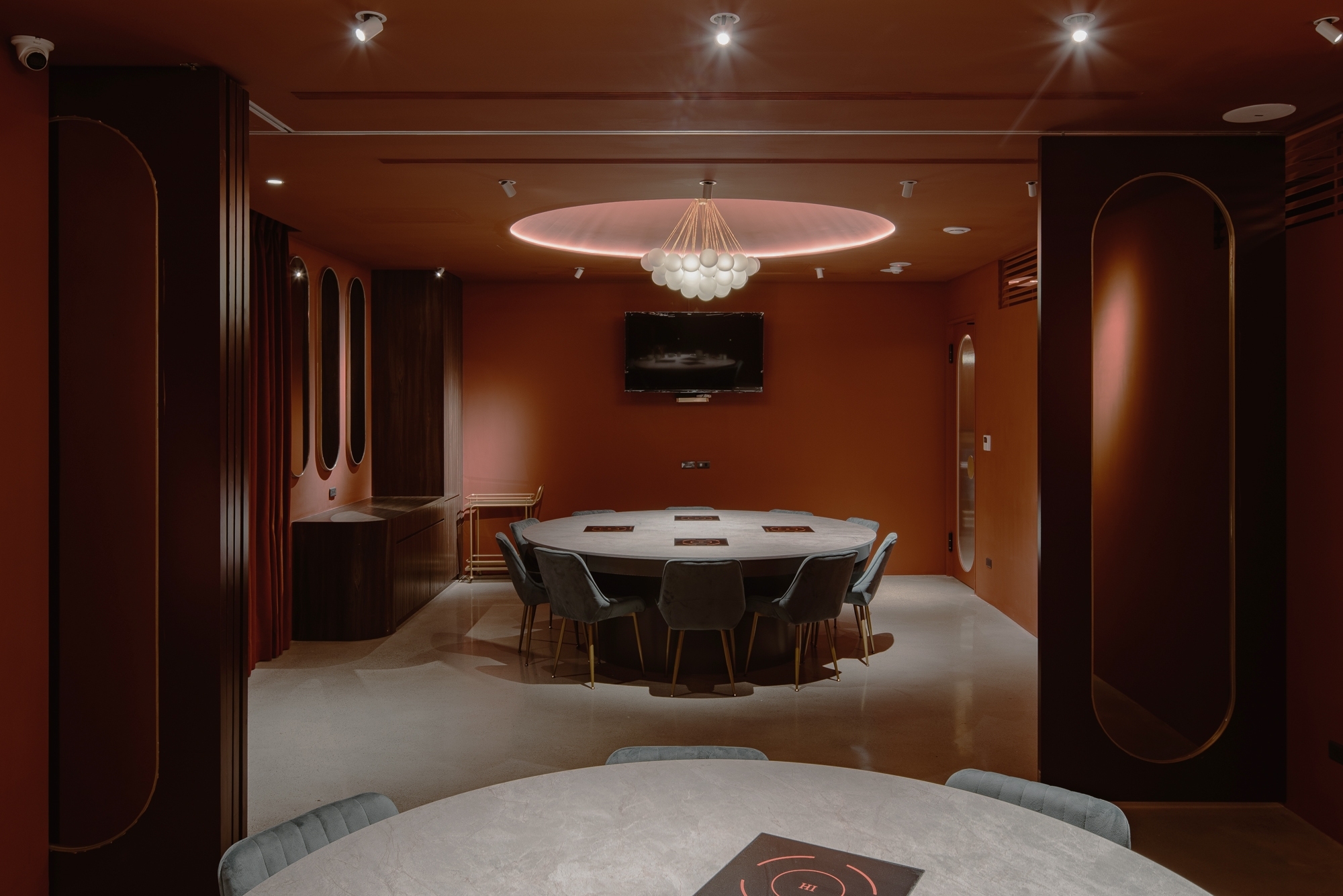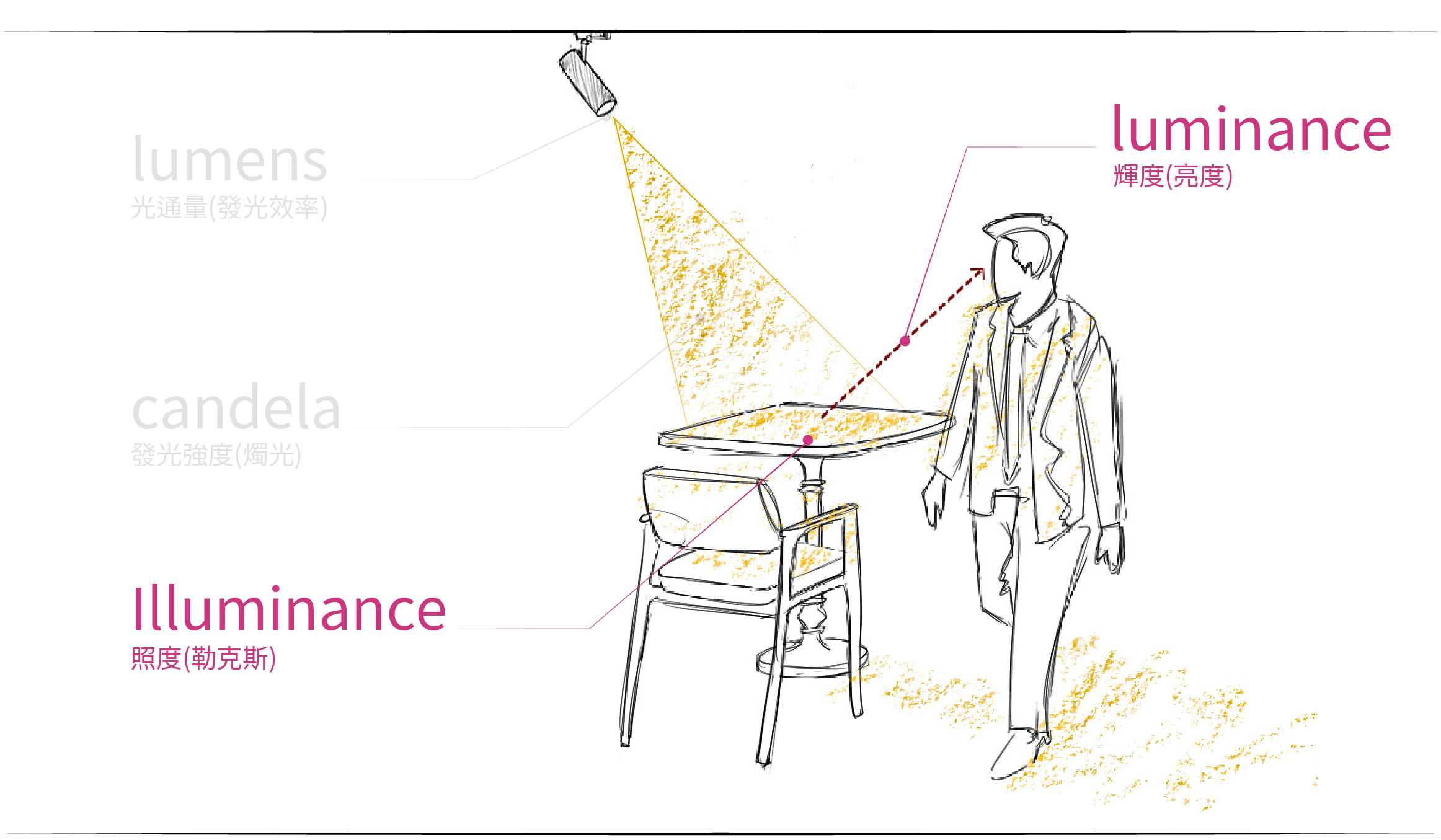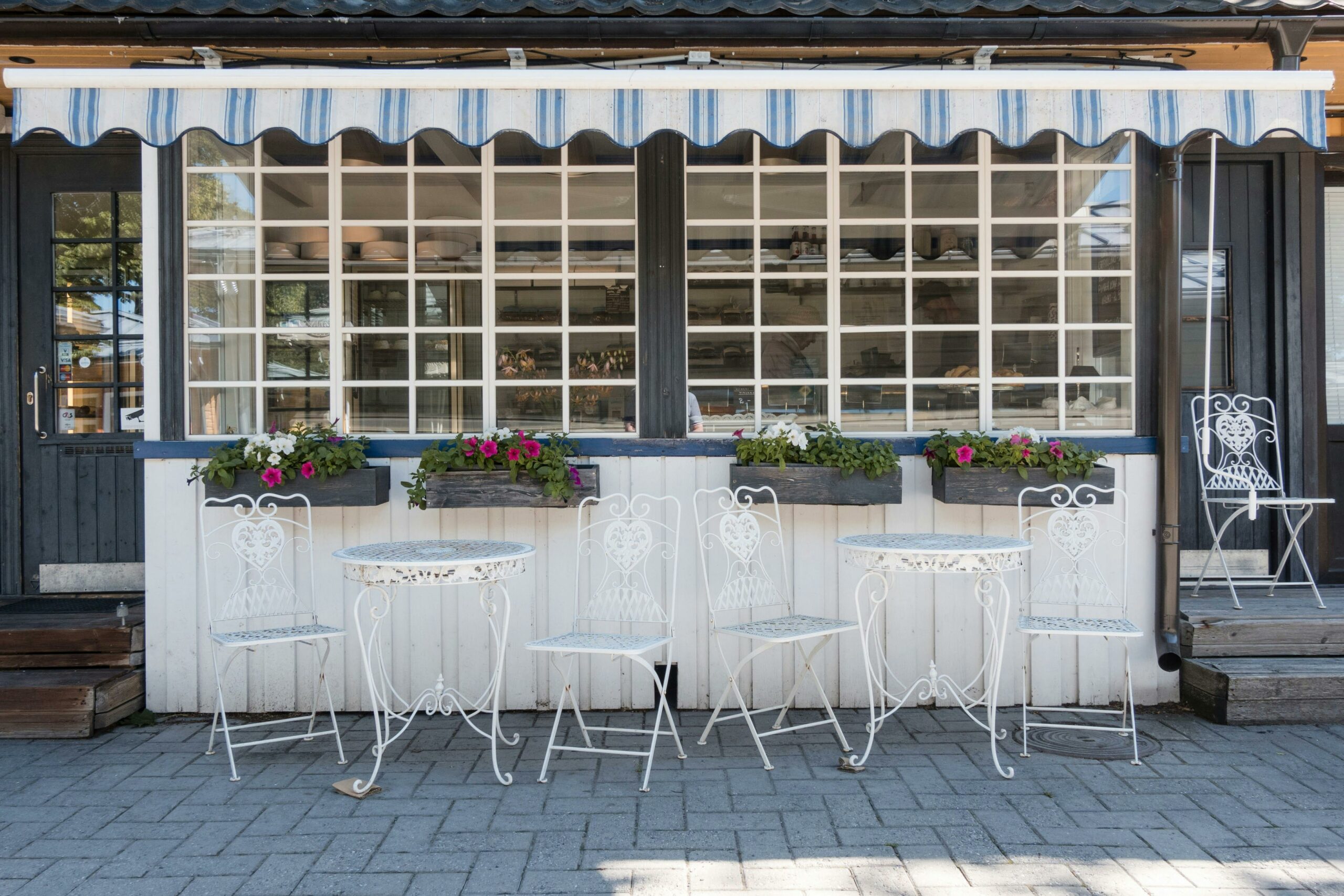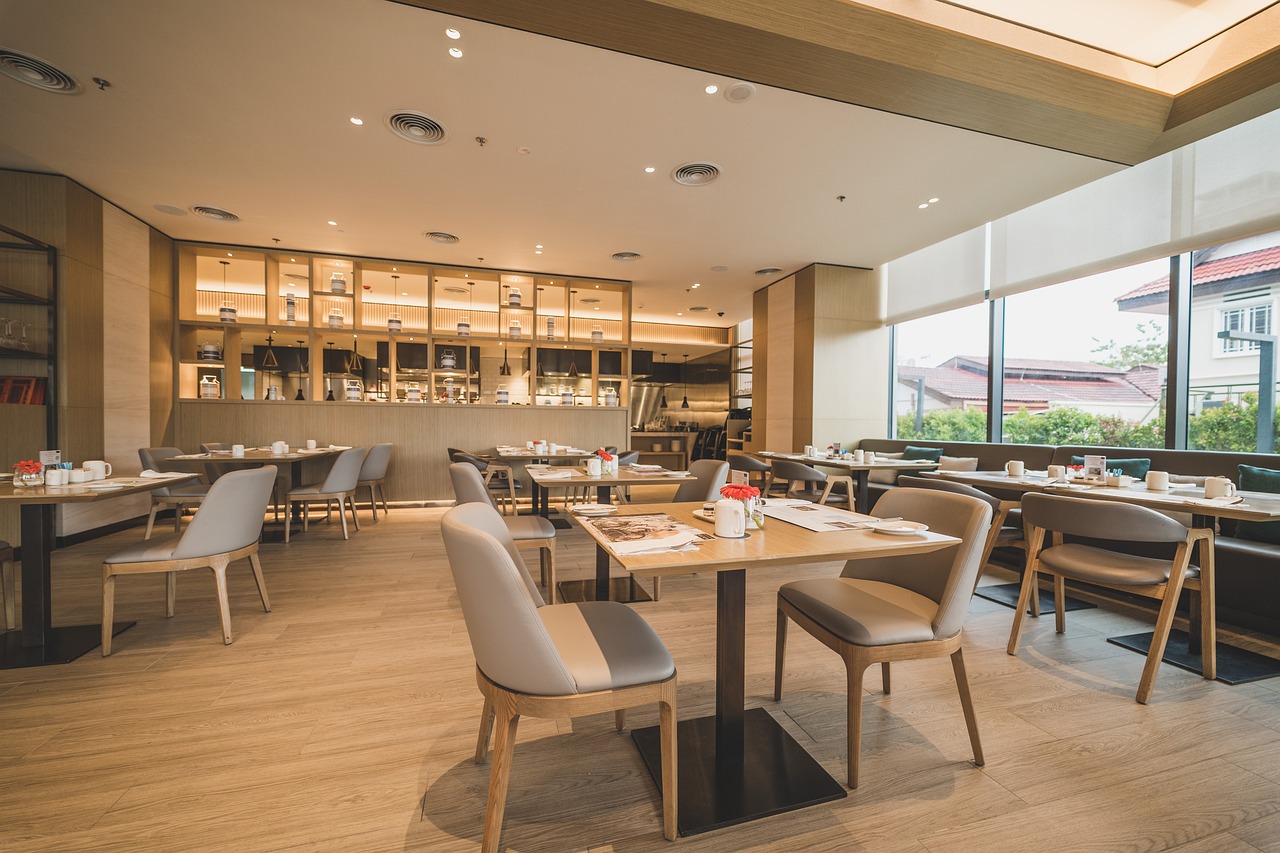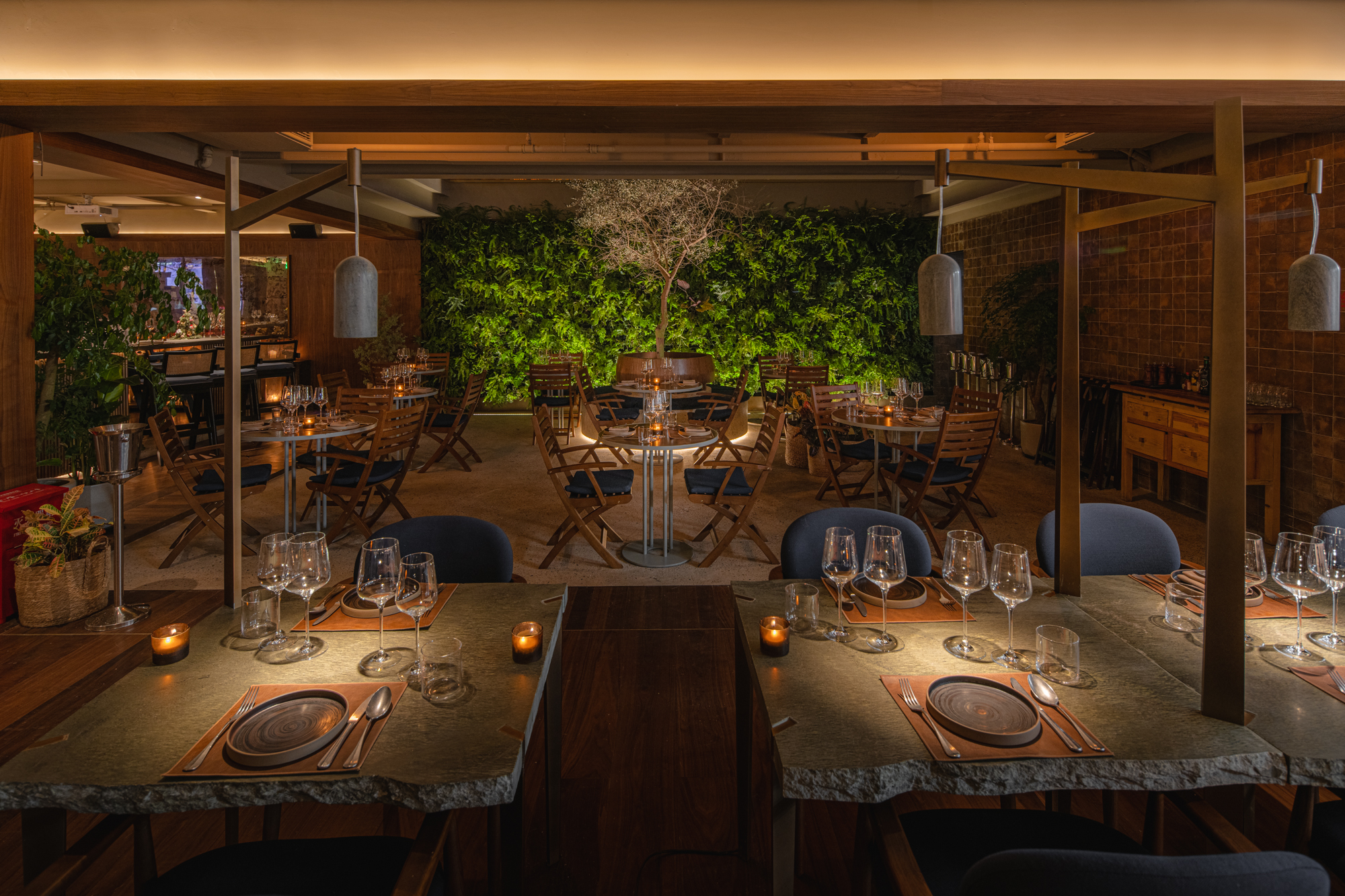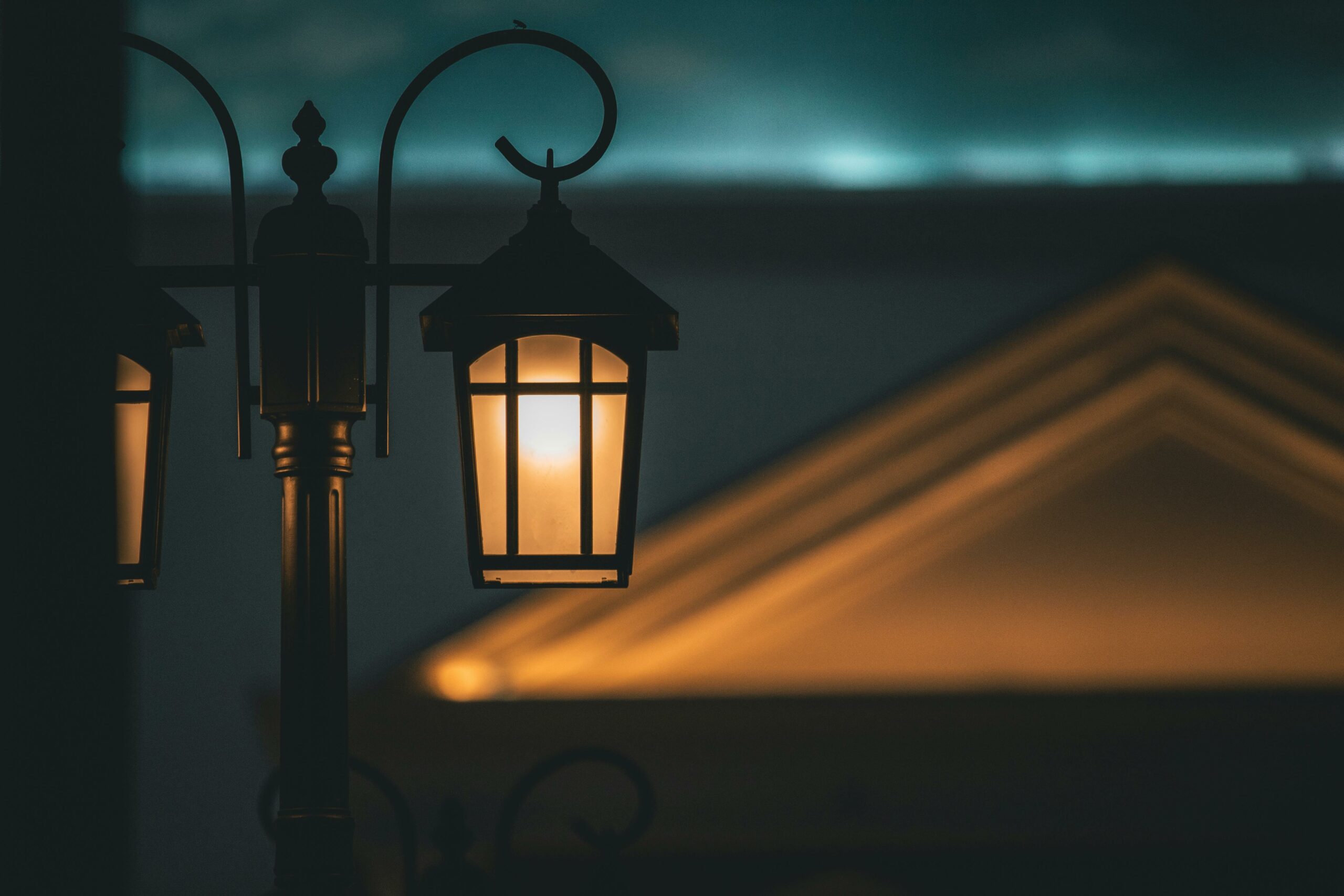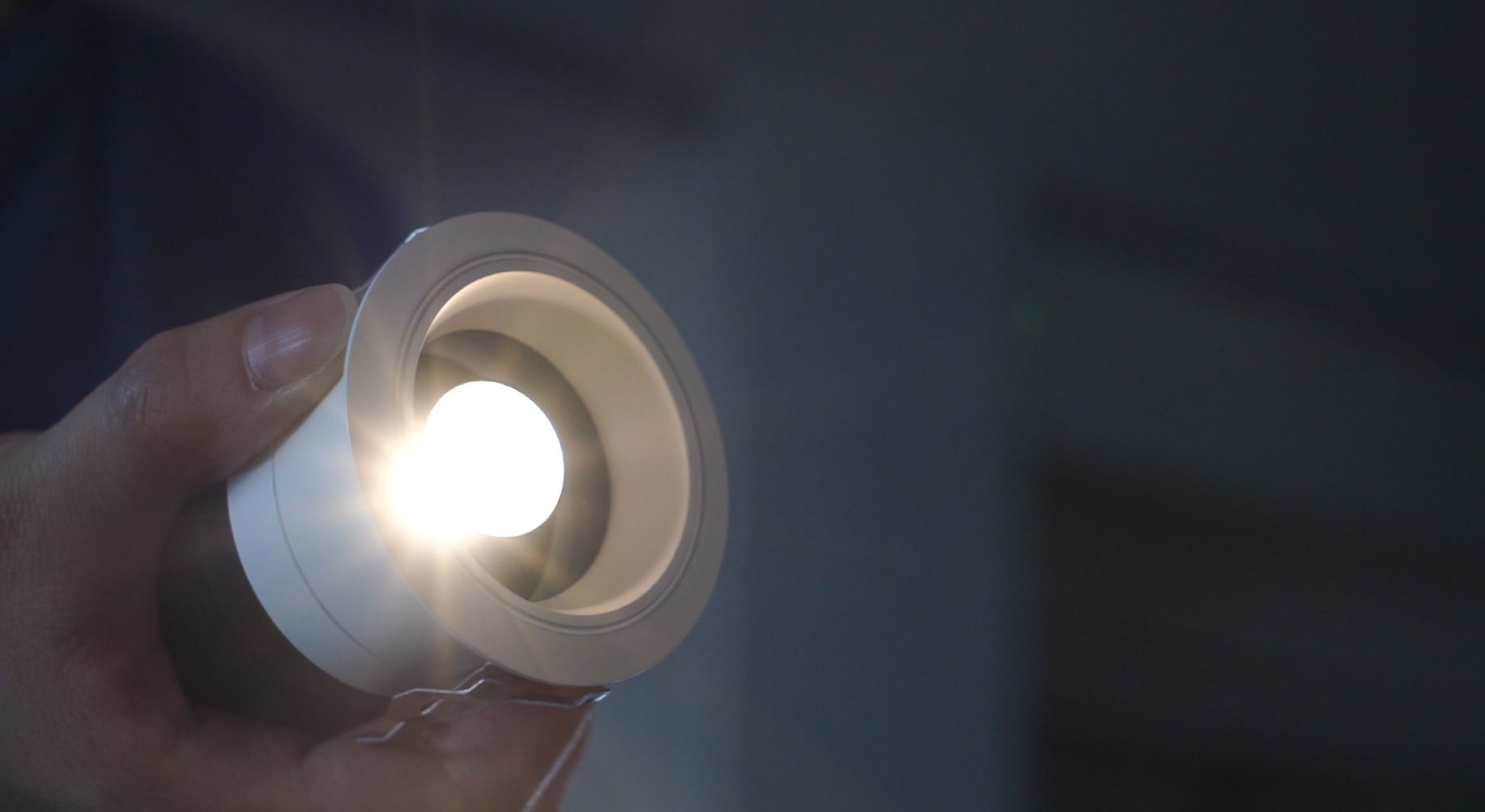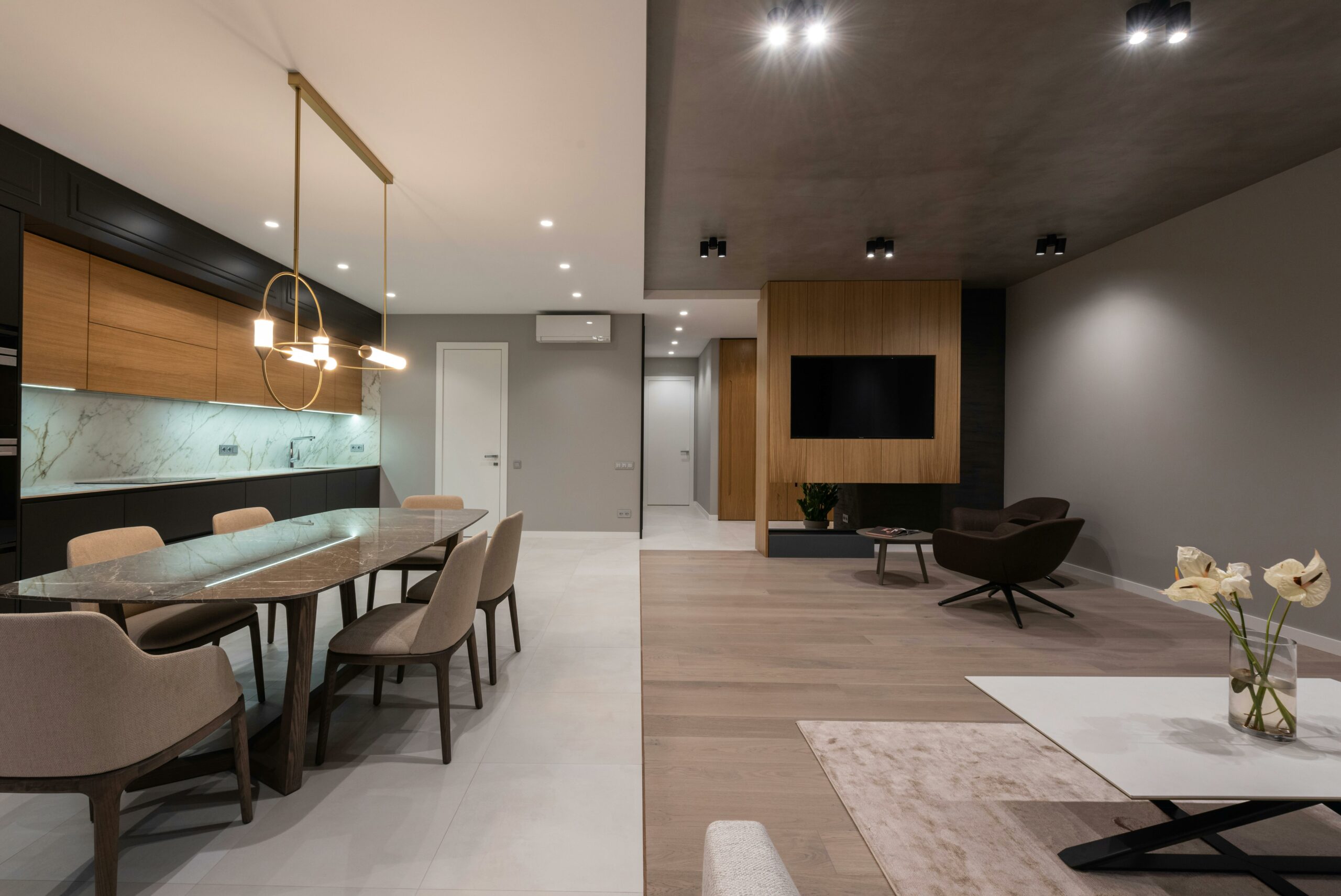
「這盞燈會不會太亮或不夠亮?」、「瓦數是否過高?」……
燈具選型時,您是否曾經因為不確定亮度是否合適而感到困惑?
相信不論是一般消費者或是設計師們,一旦到了要選擇照明產品時,多少都會冒出這些問題來。事實上,這些疑問指向了我們對光的感知,也就是所謂的亮度。
亮度雖然是我們日常生活中時常提及的概念,但它並非單純可以用數值衡量的標準。光的強度、照度、以及它在不同環境中的效果,往往會因我們的視覺需求、當前的環境和個人感受而有所變化。因此,即使是同一盞燈,在不同的時間或情境下,我們的感受也會有所不同。
那麼,面對眾多燈具要選擇時,我們該如何做出正確的判斷?
如何避免光線不足引發的眼睛疲勞,或是過於刺眼的燈光帶來的不適?
這正是理解光學知識的重要性所在。
接下來,我們將探討亮度、光通量、照度等照明概念,並通過日常生活中的應用場景,幫助您更好地選擇合適的燈具,營造出理想的生活與工作環境。
“Is this light too bright or not bright enough?” “Is the wattage too high?”
Have you ever felt confused about whether the brightness of a lighting fixture is suitable when choosing one?
Whether you’re a regular consumer or a designer, when it comes time to select lighting products, these questions inevitably arise. These concerns revolve around our perception of light, specifically its brightness.
While brightness is a concept frequently mentioned in our daily lives, it’s not a standard that can be simply measured by numbers. The intensity of light, illuminance, and its effects in different environments often vary based on our visual needs, the current environment, and personal feelings. Therefore, even the same light can feel different at various times or in different settings.
So, how do we make the right choice when faced with numerous lighting options? How do we avoid eye strain from insufficient light or discomfort from overly glaring light?
This is where understanding lighting principles becomes crucial.
In the following sections, we will explore concepts such as brightness, luminous flux, and illuminance, and through applications in everyday scenarios, help you choose the right lighting fixtures to create an ideal living and working environment.
How Many Watts Are Bright Enough?
幾瓦才夠亮?
「幾瓦才夠亮?」
「瓦數是否會過高?」
再回答這兩個問題前,我們先來瞭解基本概念:
.瓦數(W)
是衡量電器功率的單位,表示每秒消耗的能量。
雖然瓦數越高,電器消耗的電能越多,但這並不直接表示燈具的亮度。
.發光效率(lm/W)
是衡量光源效率的重要指標,表示每消耗1瓦特電力所產生的光通量。
燈具的亮度由光通量(流明)決定,而這取決於光源的發光效率。
“How many watts are bright enough?”
“Is the wattage too high?”
Before answering these questions, let’s understand some basic concepts:
.Wattage (W)
Wattage is a unit of power consumption for electrical devices, indicating the energy consumed per second.
Although higher wattage means more energy consumption, it doesn’t directly correlate with the brightness of a lighting fixture.
.Luminous Efficacy (lm/W)
Luminous efficacy is an important indicator of a light source’s efficiency, representing the amount of luminous flux produced per watt of power consumed.
The brightness of a fixture is determined by its luminous flux (lumens), which depends on the light source’s efficacy.
發光效率怎麼看?
假設有一顆15W的燈泡能產生1500流明的光通量,發光效率為:
1500lm / 15W = 100 lm/W。
而另一顆12W的燈泡也能產生1500流明的光通量,發光效率為:
1500lm / 12W = 125 lm/W。
計算兩款燈泡的效率差異:( 125 – 100 ) ÷ 125 × 100% = 20%。
這意味著12W的燈泡比15W的燈泡能省下約20%的電費,這證實了發光效率的數值越高愈省電。
How to Evaluate Luminous Efficacy?
Let’s say a 15W bulb produces 1500 lumens of luminous flux, with an efficacy of: 1500 lm / 15W = 100 lm/W.
Another 12W bulb also produces 1500 lumens of luminous flux, with an efficacy of: 1500 lm / 12W = 125 lm/W.
The efficiency difference between the two bulbs is calculated as: (125 – 100) ÷ 125 × 100% = 20%.
This means the 12W bulb can save about 20% of energy costs compared to the 15W bulb, proving that a higher luminous efficacy value leads to better energy savings.
回到大家最在意的問題:幾瓦才算夠亮?
由上述可知,瓦數並不是唯一決定亮度的因素。
選擇瓦數過高的燈具,可能會導致不必要的能耗和電費開銷。
而選擇瓦數過低的燈具,則可能無法提供足夠的光線。
由於不同燈具的發光效率各異,我們應該著重考慮的是燈具能提供的光通量(流明),並根據實際需求及應用場景,同時考慮以達到最佳的光線效果和節能效果,來選擇適合的瓦數。
So, what wattage is bright enough?
As noted, wattage is not the sole determinant of brightness.
Choosing a fixture with too high a wattage could lead to unnecessary energy consumption and increased electricity costs. On the other hand, a fixture with too low wattage might not provide sufficient light.
Given the varying luminous efficacy of different fixtures, it’s more important to focus on the luminous flux (lumens) the fixture can provide. Choose the appropriate wattage based on actual needs and application scenarios to achieve the best lighting effect and energy savings.
What Is Luminous Flux (Lumens)?
何謂光通量(流明)?
光通量以流明(lm)為單位,也被稱為光功率(luminous power),表示在輻射方向上每單位時間內能被人眼感知的輻射能量。
計算光通量可以使用公式:lm = cd.sr,其中 cd 是燭光(candle),sr 是立體角(solid angle),單位為球面弧度(steradians, sr)。即1流明等於1燭光均勻點光源在一立弳(立體角)範圍內發射的光通量。
Luminous flux measures the total amount of visible light emitted by a light source, expressed in lumens (lm). It’s also known as luminous power, representing the radiant energy perceived by the human eye over time in a given direction.
Luminous flux can be calculated using the formula: lm = cd · sr, where cd represents candela (candle), and sr represents the solid angle (steradians, sr). Thus, 1 lumen equals the luminous flux emitted by a uniform point light source of 1 candela in one steradian.
光通量的重要性體現在多個方面,需要注意的是,光通量並不是衡量亮度的唯一指標,本身也與距離無關。
那麼,為甚麼亮度會隨著光源與物體之間的距離增加而降低呢?
這是因為光能會隨著距離的增加而在更大的面積上擴散,造成每個單位面積上的光強度減少。流明僅代表光源發出的光能總量,不考慮光能的分佈或光源與物體的距離。
The importance of luminous flux is evident in many aspects, but it’s crucial to note that luminous flux isn’t the sole indicator of brightness and is independent of distance.
So why does brightness decrease as the distance between the light source and the object increases?
This happens because light energy spreads over a larger area as the distance increases, reducing the intensity per unit area. Lumens only represent the total light energy emitted by the source, without considering its distribution or the distance from the object.
What Is Light Intensity (Candela)?
何謂光強度(燭光)?
光強度是指光源在一個立體角中的發光能力,單位是燭光(candela,cd)。可以通過以下公式來計算:cd = lm / sr,其中lm是光通量,sr是立體角(以球面弧度表示)。在白金凝固點溫度下,光強度的測量基於每六十分之一平方公分面積的發光強度。1燭光的光源約能發射12.57流明的光通量。
光強度(燭光)與光通量的概念相似,更多是用在燈具的光學設計上:
1. 光強度的量測與光線角度和方向性有關。
在相同的瓦數以及流明的前提下,手電筒發出的光線距離比燈泡還遠,亮度的感受也強很多。那是因為手電筒在光學設計上會讓光線更集中後再發散出去,光線發散角度愈窄,打出去的光線平均強度愈強。
這與燈具設計中的光束角(Beam Angle)概念類似:
光束角度越小,光的穿透力越強,光束角度越大,光的穿透力越弱。
2. 光強度反映了光在某個方向上的相對集中程度。
為了方便計算,我們用一個100瓦的燈泡舉例:
100瓦燈泡能產生約1600流明的光通量,在特定方向上,光強度可能達到1000燭光,但在其他方向上,光強度會有所減弱。
Light intensity refers to the ability of a light source to emit light within a solid angle, measured in candela (cd). It can be calculated using the formula: cd = lm / sr, where lm is luminous flux, and sr is the solid angle (expressed in steradians). At the temperature of platinum solidification, light intensity is measured based on the luminous intensity per square centimeter of area. A 1-candela light source can emit approximately 12.57 lumens of luminous flux.
The concept of luminous intensity (candela) is similar to luminous flux, but it is more often used in the optical design of lighting fixtures.
1. Light intensity is related to the angle and direction of light.
Given the same wattage and lumens, a flashlight’s light travels further and appears much brighter than a bulb’s light. This is because flashlights are optically designed to focus the light before dispersing it. The narrower the light’s dispersion angle, the stronger its average intensity.
This concept is similar to the beam angle in lighting design:
the smaller the beam angle, the stronger the light’s penetration; the larger the beam angle, the weaker the penetration.
2. Light intensity reflects the relative concentration of light in a specific direction.
For ease of calculation, let’s take a 100-watt bulb as an example:
A 100-watt bulb can produce around 1600 lumens of luminous flux. In a specific direction, the luminous intensity may reach 1000 candelas, but it will diminish in other directions.
您應該注意到,在討論光通量和光強度時,我們涉及到一些技術性的細節,這些可能會顯得複雜。但其實您不需要深入理解這些細節,我們的專業團隊會根據您的設計需求,選擇適合的燈具並進行光通量規劃,以確保燈光效果符合您的預期。
實際上,照度更是我們在照明設計中才需要特別關注的指標。我們會根據不同空間的需求調整照度,讓光線能夠最有效地提升您的工作環境或居住空間的舒適度。接下來會繼續帶您認識照度。
You might have noticed that our discussion on luminous flux and light intensity involves some technical details that can seem complex. However, you don’t need to delve into these specifics yourself. Our professional team will select the right fixtures and plan the luminous flux according to your design needs to ensure that the lighting effects meet your expectations.
In practice, illuminance is the key metric we focus on in lighting design. We will adjust the illuminance based on the requirements of different spaces to ensure that the light enhances the comfort of your working or living environment. Next, we will continue to explore the concept of illuminance.
您或許感興趣的光強度小知識:人眼對綠光最靈敏?
在光度量中,光強度是最早被量測出來的,也是目前國際單位制(SI units)的基本量。根據公式定義:「1燭光等於頻率540×10¹²赫(Hz)之光源發出之單色輻射,在一定方向每立弳之輻射通量為683分之1瓦特(W)之發光強度」。這個頻率對應的光源波長約為555 nm,也是人眼對光線最敏感的波長。
「燭光」可以說是唯一與生物作用(人類視覺)相關的基本單位。人眼視網膜上的感光細胞對不同波長的光敏感度不同,對綠光最靈敏,而對紅光和藍光較不靈敏。例如,輻射度量(radiometric quantity)中的輻射通量(radiant flux)是以單位時間內通過某一面積的所有輻射能量(包括紅外、紫外和可見光)來計量的。若只計算作用於人眼睛的功率,則稱為光通量(luminous flux)。
由於眼睛在受光刺激時,雖不能定量地判斷光強度的大小,但能精確判斷不同光源的明暗感覺。基於此,科學家們研製了目視光度計(visual photometer),用來量測光源的光強度並比較不同光源的效果。而根據最終實驗顯示,在較明亮的環境中,人眼對波長為555 nm的綠色光最為敏感。
(詳細資料可至 國家度量衡標準實驗室 「光強度的單位:燭光(cd)」一文查看)
Interesting Facts About Light Intensity You Might Like
Among photometric quantities, light intensity is the first to be measured and is a fundamental unit in the International System of Units (SI). According to the formula: “1 candela equals the luminous intensity of a light source emitting monochromatic radiation at a frequency of 540 × 10¹² Hz in a specified direction, with a radiant flux of 1/683 watts per steradian.” This frequency corresponds to a wavelength of approximately 555 nm, which is also the wavelength most sensitive to the human eye.
“Candela” is the only basic unit related to biological function (human vision). Photoreceptor cells on the human retina have different sensitivities to various wavelengths of light, being most sensitive to green light and less sensitive to red and blue light. For example, radiant flux in radiometric quantities measures the total radiant energy passing through a specific area per unit time, including infrared, ultraviolet, and visible light. When considering only the power acting on the human eye, it’s called luminous flux.
Though the eye cannot quantitatively judge the intensity of light when stimulated, it can accurately judge the brightness of different light sources. Based on this, scientists developed the visual photometer, used to measure the light intensity of sources and compare their effects. Final experiments showed that in brighter environments, the human eye is most sensitive to green light with a wavelength of 555 nm.
(For more detailed information, please refer to the article ‘Unit of Luminous Intensity: Candela (cd)’ from the National Measurement Laboratory.)
What Is Illuminance (Lux)?
何謂照度(勒克斯)?
照度(Illuminance)是指光源照射到物體表面所產生的光通量,單位為勒克斯(lux)。照度的計算公式可以表達為:1 lx = 1 lm/m²。即1勒克斯等於1流明的光通量垂直照射於1平方公尺平面上的光照度。這個數值直接反映了光源在特定面積上的光照強度。
照度會受到多種因素的影響,包括燈具的類型、燈泡的數量、照射距離以及周邊環境的反射和漫射。高照度可以使空間看起來明亮,但過高的照度可能會造成刺眼感;而照度過低則會增加眼睛疲勞,因此合適的照度對於空間的舒適度和眼睛的健康都非常重要。
Illuminance refers to the amount of luminous flux produced by a light source on a surface, measured in lux (lx). The calculation formula for illuminance can be expressed as: 1 lx = 1 lm/m². That is, 1 lux equals the illuminance of 1 lumen of luminous flux vertically shining on a 1 square meter surface. This value directly reflects the intensity of light from a source over a specific area.
Illuminance is influenced by various factors, including the type of fixture, the number of bulbs, the distance of illumination, and the surrounding environment’s reflection and diffusion. High illuminance can make a space appear bright, but excessive illuminance may cause glare, while too low illuminance can lead to eye strain. Therefore, proper illuminance is essential for both comfort and eye health in a space.
為何常有人會把照度與亮度的概念混淆?
照度(Illuminance)和亮度(Luminance)是光學中兩個常被混淆的概念。它們雖然都涉及光的量,但本質上有顯著的不同:
.照度(Illuminance) 是量度光源照射到某個表面上光通量的指標, 單位為勒克斯(lux),專注於光源照射的總光量。
.亮度(Luminance) 則描述了物體表面反射出來的光被眼睛感知的強度,單位為燭光每平方米(cd.m²),主要關注於光的感知強度和表面亮度。
人們常常混淆這兩者,是因為它們都涉及光的量,但照度是客觀的、量化的測量,而亮度則是主觀的、視覺感知的結果。照度數值高不一定意味著亮度感覺也高,因為亮度還受環境反射、表面顏色等因素影響。
舉個例子:
一個燈光明亮的廚房可能提供高達1000勒克斯的照度,但如果牆壁為深色,實際感受到的亮度可能會較低。反之,淺色牆面的客廳即使照度較低,由於淺色表面的高反射性,亮度感覺依然充足。
Why do people often confuse the concepts of illuminance and luminance?
Illuminance and luminance are two commonly misunderstood concepts in optics. While both deal with the amount of light, they are fundamentally different in nature:
.Illuminance measures the amount of light that hits a surface from a light source, quantified in lux (lx). It focuses on the total amount of light falling on a surface.
.Luminance describes the intensity of light that is reflected off a surface and perceived by the human eye, measured in candela per square meter (cd/m²). It concerns the perceived brightness and the surface’s light intensity.
The confusion between these two arises because they both relate to light quantities, but illuminance is an objective, quantifiable measure, while luminance is a subjective result of visual perception. High illuminance does not necessarily mean high perceived brightness, as luminance is also influenced by factors such as surface reflectivity and color.
For example:
A brightly lit kitchen might have an illuminance of up to 1000 lux, but if the walls are dark, the perceived brightness might be lower. Conversely, a living room with light-colored walls might feel bright even with lower illuminance due to the high reflectivity of the surfaces.
照度與光通量之間的關係?
在空間照明設計中,照度是我們最常使用的指標之一,且與光通量有著密不可分的關係。雖然光通量的數值對選擇燈具來說至關重要,但在實際應用中,照度的設定應根據空間的特性和設計需求來決定,而不僅僅依賴光通量的數值。
以辦公空間為例,根據國際照明委員會(CIE)的建議,工作區域的照度應該達到300至700 lux,以減少眼睛疲勞並提升工作效率。在標準的開放式辦公室中,燈具需要提供足夠的光線,確保每平方米的照度達到這一標準。
此外,設計室對於照度的要求更高,建議在750至1500 lux之間,以滿足精細工作的視覺需求;而會議室的照度則應保持在300至750 lux之間,以提升專注力並促進有效的交流氛圍。
在家庭書房中,全般照明的建議照度約為100 lux,但在進行閱讀等需要高度專注的活動時,照度應提高至600 lux,以確保舒適的閱讀環境和視覺體驗。
The Relationship Between Light Intensity and Luminous Flux
In spatial lighting design, illuminance is one of the most commonly used metrics, and it is closely related to luminous flux. While the value of luminous flux is crucial when selecting lighting fixtures, the appropriate level of illuminance should be determined based on the characteristics of the space and the design requirements, rather than relying solely on the luminous flux value.
For example, in office spaces, the International Commission on Illumination (CIE) recommends that the illuminance in work areas should range between 300 to 700 lux to reduce eye strain and improve work efficiency. In a standard open-plan office, lighting fixtures need to provide sufficient light to ensure that the illuminance per square meter meets this standard.
Moreover, design studios require a higher level of illuminance, typically between 750 to 1500 lux, to accommodate the visual demands of detailed work. Meeting rooms, on the other hand, should maintain an illuminance level between 300 to 750 lux to enhance focus and facilitate effective communication.
In a home office, general lighting is typically recommended at around 100 lux, but for activities requiring high levels of concentration, such as reading, the illuminance should be increased to 600 lux to ensure a comfortable reading environment and visual experience.
日常生活中所需的照度範圍如下:
Recommended Illuminance Levels for Daily Life:
The Application of Optical Knowledge in Daily Life
光學知識在日常生活中的應用
選擇合適的照明亮度不僅僅是數字計算,更關鍵的是如何營造舒適的氛圍。光通量、光強度、照度和亮度等術語聽起來雖然複雜,但實際上它們都是我們日常生活中不可或缺的一部分,並直接影響我們的工作效率和生活品質。
然而,僅僅了解這些概念並不足以應對所有的照明挑戰。真正有效的照明規劃需要的不僅是理論知識,更需要豐富的實務經驗。這正是我們的專業所在。我們具備深厚的專業知識和經驗,能夠幫助您解決複雜的照明問題,讓溝通更加順暢,從而為您量身打造最適合的解決方案。
我們致力於將理論與實踐相結合,不僅滿足您的需求,更力求超越您的期望。無論是住宅還是商業空間,我們的專業團隊都將為您提供最合適的建議和支持,幫助您創造出更明亮、更舒適的環境,完美契合您的設計願景。
Choosing the right lighting brightness is not just about numerical calculations; it’s about creating a comfortable atmosphere. Terms like luminous flux, intensity, illuminance, and brightness may sound complex, but they are essential parts of our daily lives and directly impact our productivity and quality of life.
However, merely understanding these concepts isn’t enough to tackle all lighting challenges. Effective lighting planning requires not only theoretical knowledge but also extensive practical experience. This is where our expertise comes in. With our deep professional knowledge and experience, we can help you navigate complex lighting issues, ensuring smooth communication and delivering tailored solutions that fit your needs.
We are committed to combining theory with practice to not only meet your requirements but also exceed your expectations. Whether for residential or commercial spaces, our expert team will provide the most suitable advice and support, helping you create brighter, more comfortable environments that perfectly align with your design vision.
希望本文能夠加深您對照明基礎的理解,並在未來的設計規劃中,助您實現理想的光環境。
I hope this article deepens your understanding of lighting fundamentals and assists you in creating the ideal lighting environment in your future design projects.
空間照明的隱形殺手──眩光
Why Does Glare Occur?為甚麼會形成眩光? Uni…
封裝技術:SMD LED 與 COB LED
LED Chip TechnologiesLED芯片技術 What …

